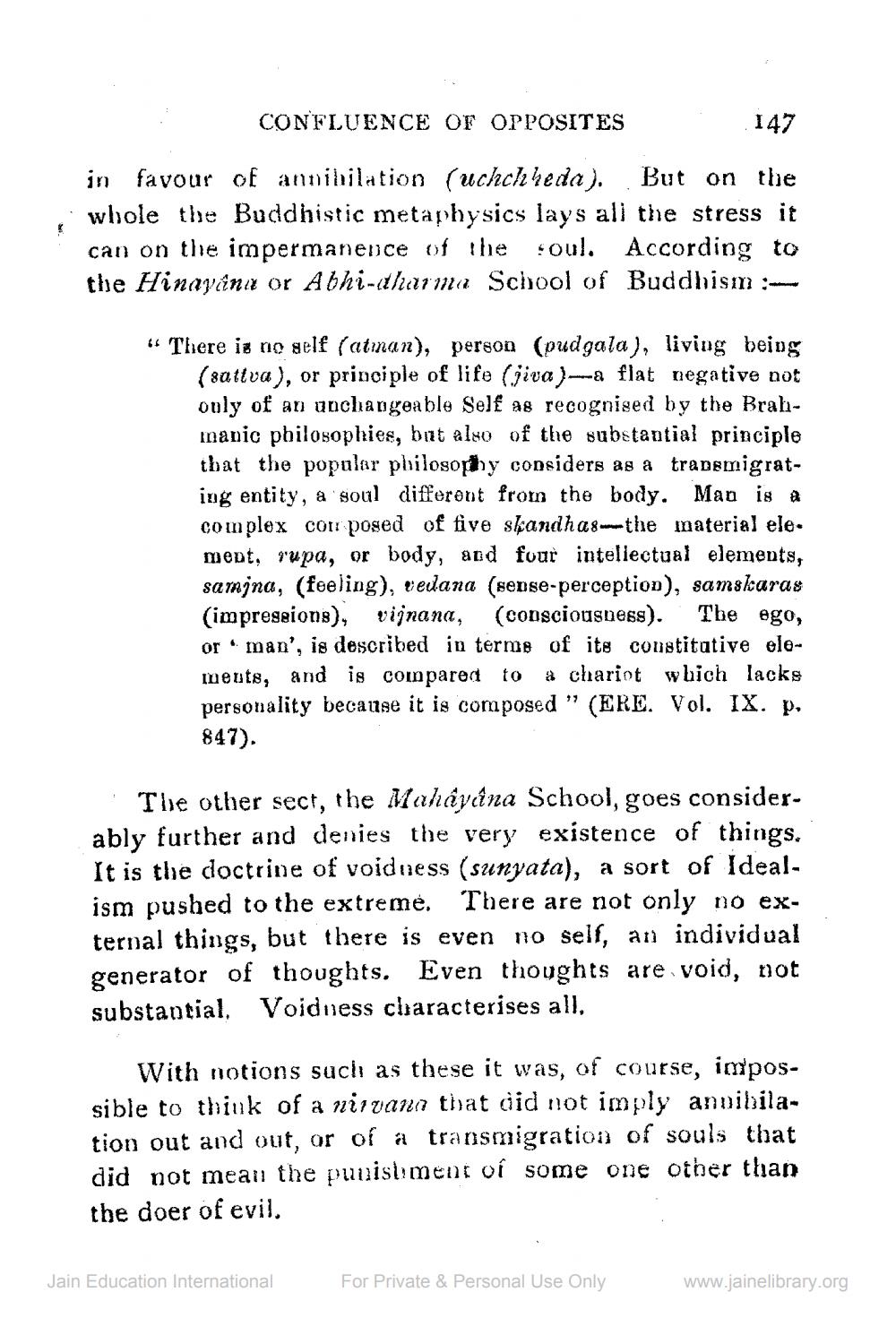________________
CONFLUENCE OF OPPOSITES
147 in favour of annihilation (uchchheda). But on the whole the Buddhistic metaphysics lays all the stress it can on the impermanence of the soul. According to the Hinayina or Abhi-dharma School of Buddhism :
" There is no self (atınan), person (pudgala), living being
(sattva), or principle of life (jiva)—a flat negative not only of an unchangeable Self as recognised by the Brahmanic philosophies, but also of the substantial principle that the popular philosophy considers as a transmigrating entity, a soul differont from the body. Man is a complex con posed of five skandha 8-the material ele. medt, rupa, or body, and four intellectual elements, samjna, (feeling), vedana (sepse-perception), samskaras
impressions), vijnana, (consciousness). The ego, or man', is described in terms of its constitative elements, and is compared to a chariot which lacks personality because it is composed " (ERE. Vol. IX. p. 847).
The other sect, the Mahayana School, goes considerably further and denies the very existence of things. It is the doctrine of voidness (sunyata), a sort of Idealism pushed to the extreme. There are not only no external things, but there is even no sell, an individual generator of thoughts. Even thoughts are void, not substantial. Voiduess characterises all,
With notions such as these it was, of course, impossible to thiuk of a nirvana that did not imply annibilation out and out, or of a transmigration of souls that did not mean the punishment of some one other than the doer of evil.
Jain Education International
For Private & Personal Use Only
www.jainelibrary.org




